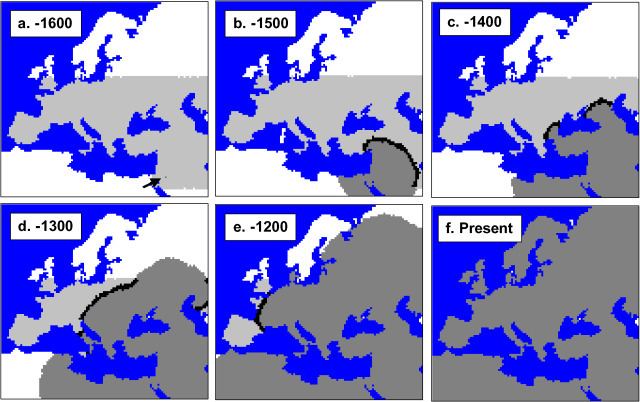Geographical range Afro-Eurasia Dates 600,000 – 40,000 BP | ||
 | ||
Major sites | ||
Mousterian is a name given by archaeologists to a style of predominantly flint tools (or industry) associated primarily with Neanderthals (Homo neanderthalensis). They date to the Middle Paleolithic, the middle part of the European Old Stone Age.
Contents
Naming
The culture was named after the type site of Le Moustier, a rock shelter in the Dordogne region of France. Similar flintwork has been found all over unglaciated Europe and also the Near East and North Africa. Handaxes, racloirs and points constitute the industry; sometimes a Levallois technique or another prepared-core technique was employed in making the flint flakes.
Characteristics
Mousterian tools that have been found in Europe were made by Neanderthals and date from around 160,000 BP and 40,000 BP. Some assemblages, namely those from Pech de l’Aze, include exceptionally small points prepared using the Levallois technique among other prepared core types, causing some researchers to suggest that these flakes take advantage of greater grip strength possessed by Neanderthal physiology. In North Africa and the Near East, Mouseterian tools were also produced by anatomically modern humans. In the Levant, for example, assemblages produced by Neanderthals are indistinguishable from those made by Qafzeh type modern humans. It may be an example of acculturation of modern humans by Neanderthals because the culture after 130,000 years reached the Levant from Europe (the first Mousterian industry appears there 200,000 BP) and the modern Qafzeh type humans appear in the Levant another 100,000 years later.
Possible variants are Denticulate, Charentian (Ferrassie & Quina) named after the Charente region, Typical and the Acheulean Tradition (MTA) - Type-A and Type-B. The industry continued alongside the new Châtelperronian industry during the 45,000-40,000 BP period.
